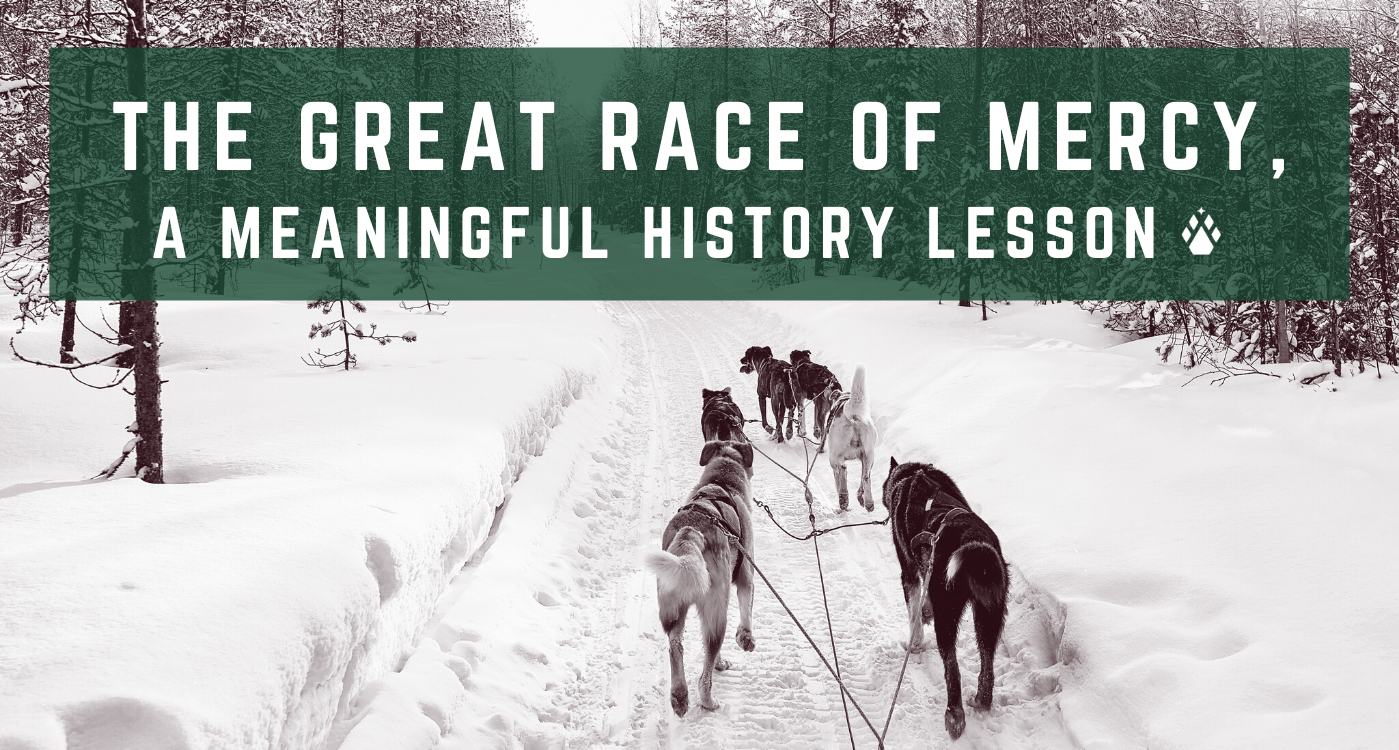The Great Race of Mercy, A Meaningful History Lesson
The Serum Run: Pandemics and Toboggans in History
During this time of pandemic, it seems our world has turned upside down. Even though active cases of COVID-19 seem to be decreasing in some areas, the future remains uncertain. It’s times like these when it can help to look backward instead of forward. This is not the first time such an illness has spread causing unimaginable difficulties. It’s also not the first time that our communities have managed to survive.
The Year was 1925
Nome, Alaska had only one doctor, Curtis Welch. There were four nurses to help and the hospital had a whopping 25 beds. At that time less than 2,000 people lived in and around the town. That summer, Dr. Welch discovered that the town’s supply of diphtheria antitoxin had expired and, though he placed an order months prior, the shipment would not arrive before ports froze over for winter.
In December, Dr. Curtis diagnosed a few cases of tonsillitis among the town’s children. Little did he know, those cases were the precursor to an epidemic of diphtheria which threatened to wipe out the entire population of Nome. By the middle of January, two children had been diagnosed with diphtheria and died. Quarantine was implemented, and telegrams were sent asking for assistance.
The Serum Run
Six years earlier, over half the native population in Nome had been decimated by the Spanish flu. With limited exposure to new illnesses, these isolated groups were among the most vulnerable to diphtheria and other epidemics. Without the needed antitoxin, they wouldn’t stand a chance.
At the time, airplanes were new and had not flown so far north during the winter. Temperatures could range from 50 to 75 degrees below zero on the ground. Up in the air, while moving hundreds of miles an hour inside of a poorly insulated cockpit, hypothermia and mechanical failure became a serious concern.
Instead of sending a plane, the governor decided to do things the old-fashioned way. He entrusted the life-saving serum to a team of mushers and sled dogs. These men were already considered heroes, traveling across the Alaskan interior in winter, delivering mail and necessary supplies to small communities. The run to Nome, however, would prove their most difficult challenge yet.
The best dog sled teams available were called upon to travel day and night. Sledding at break-neck speeds through record-breaking low temperatures, it took the combined effort of 20 mushers with about 150 sled dogs to make the run. In just six days, they traveled across 674 miles of frozen wilderness, bringing the precious diphtheria antitoxin to Nome in time to save hundreds of lives.
Miracles Do Happen
The story of the 1925 serum has inspired movies and books like “Balto: the Greatest Dog Ever.” It’s the kind of story which John Harren likes to read to his grandkids on a cold winter night. It’s exciting, it’s dramatic, and it even has a happy ending.
Certainly, it’s more exciting than staying home all summer and wearing a mask at the grocery store. But still, there some important important lessons we can learn from the serum run and apply to our situation:
First, we should never forget that a good toboggan and a team of dogs are sometimes better than an airplane. Because, in some ways, no amount of innovation can improve on a classic design.
Second, and most importantly, we should never underestimate the strength of people pulling together to save a community. Regardless of what technology we use, whether it’s vaccines or airplanes or toboggans or Zoom meetings, values like determination and commitment are what hold it all together. Whatever problems we face in the coming months, whatever tools we have at our disposal, we only stand a chance if we learn a little lesson from history and we decide to face those challenges together.

